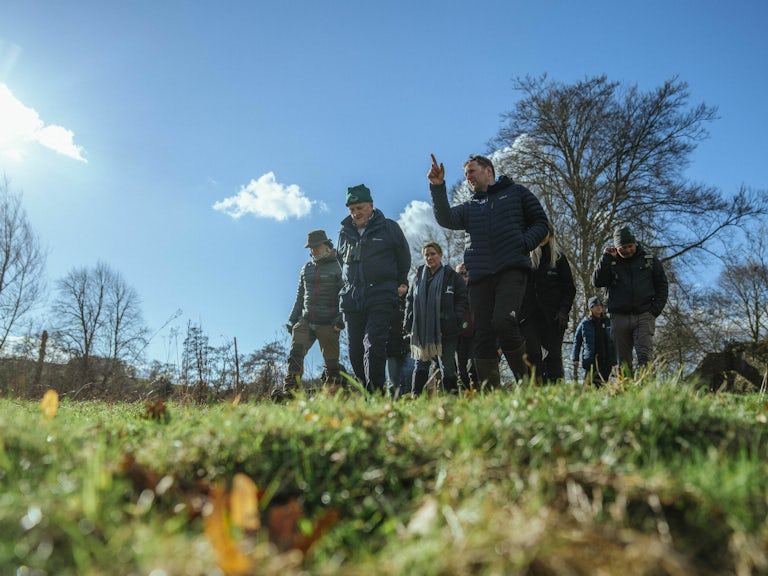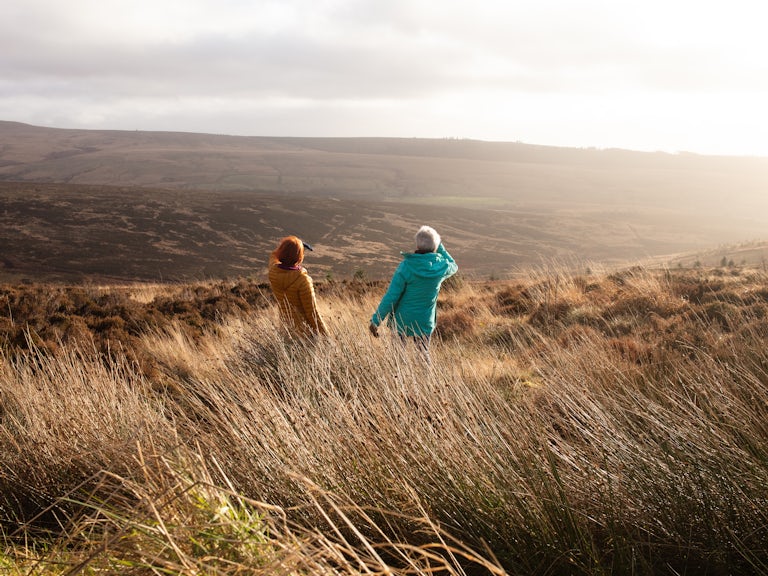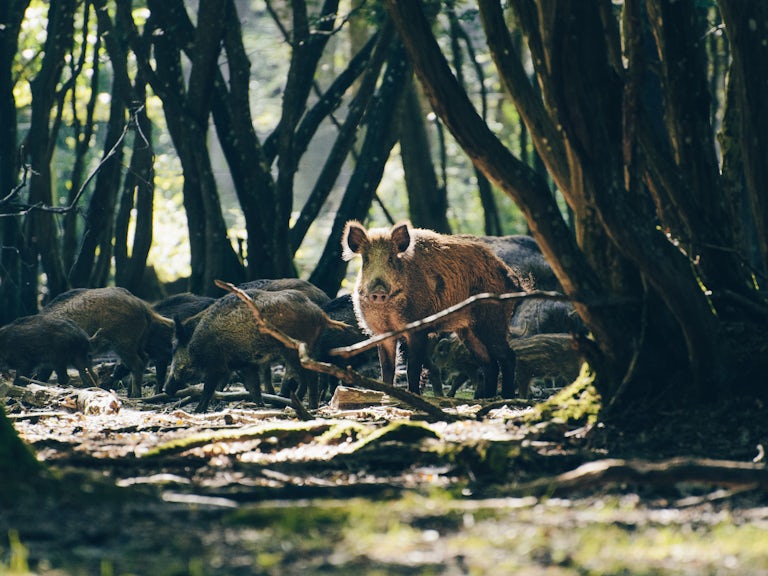The Red Squirrel: a Future in the Forest - book and interview
We take a peek at this stunning picture perfect book, and talk to SCOTLAND: The Big Picture’s Peter Cairns about the rewilding message behind it
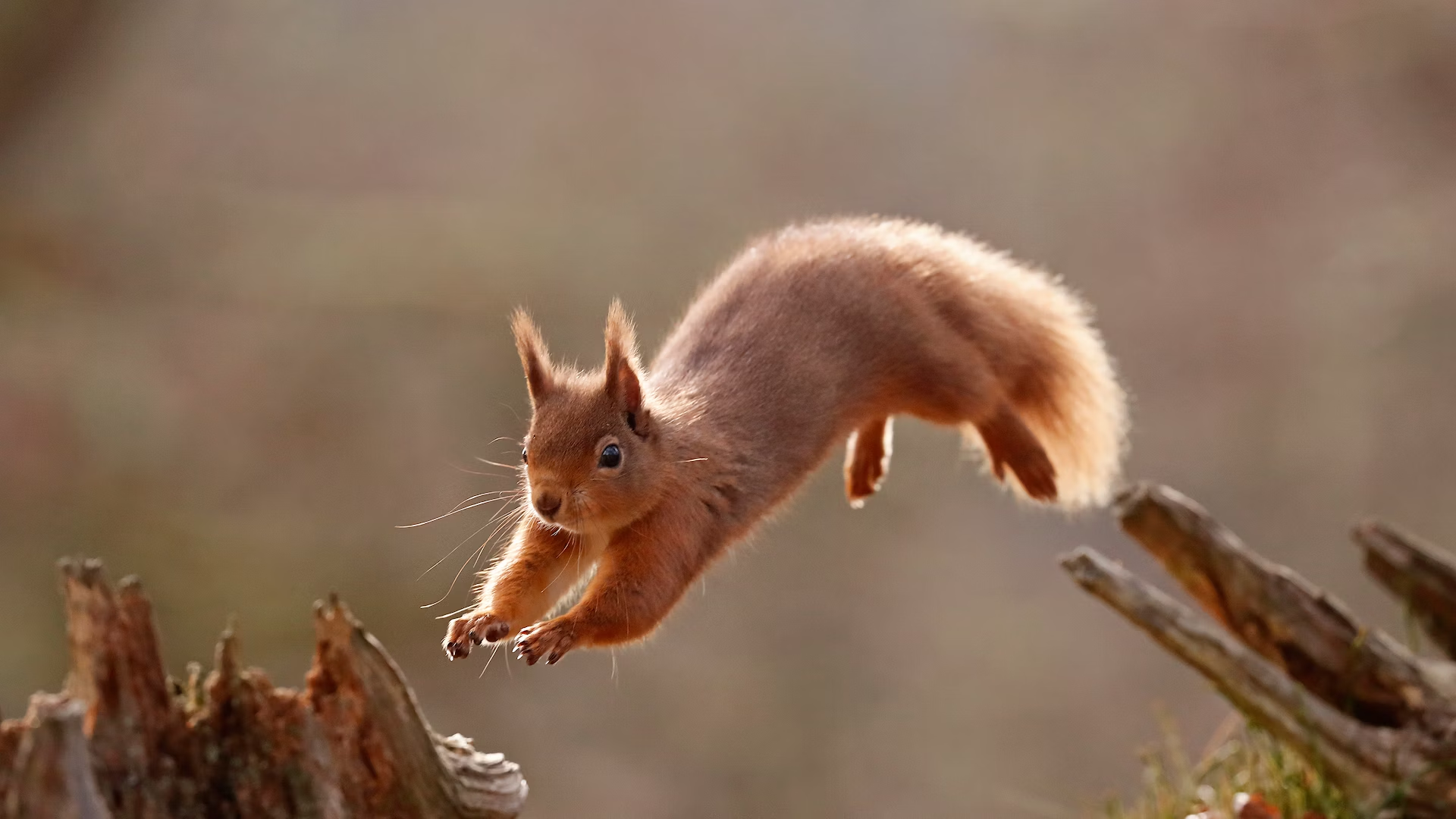
Published 13/09/2017
For those of us who dream to be closer to the natural world on a day-to-day basis than we currently are, photographer Neil McIntyre’s squirrel surveillance work will elicit a few pangs of envy. His stunning images, taken over a 20-year period, have been given a platform in SCOTLAND: The Big Picture’s latest big picture book, The Red Squirrel: a Future in the Forest. They take us up close to ‘nature’s trapeze artists’ as author Polly Pullar aptly refers to them in her complementary words to McIntyre’s prize shots.
Leafing through the book, you see one barrelling face down a tree trunk straight into camera. There’s another blinking in the soft falling snow, and one looking tiny and yet so significant on the base of a mighty Caledonian pine. These free runners of the forest are funny, agile, intent and entertaining – just doing what red squirrels do.
‘Over the years they have become so accustomed to me that I no longer need a hide,’ writes McIntyre in one of his reflections captured in the book. ‘I can now move about without them reacting, almost becoming part of their secret world – and it is this level of acceptance, even trust, that has allowed me to capture the images in this book.’
His passion and patience and good fortune is now our gain, packed into a compelling 160+ pages that George Monbiot describes as ‘one of the most beautiful books that has ever landed on my desk – a true work of art’. But it’s more than even that.
‘My intention over all these years has not necessarily been to reveal every facet of squirrel behaviour, but to capture their individual spirit and character. And – crucially – to show the connection between the squirrels and the woodland on which they depend,’ continues McIntyre. Publishing them alongside Pullar’s words finishes the job nicely.
Her words remind us of the history of squirrels – shot for their fur and for food, hunted as vermin by sporting estates (14,000 were killed over a 17-year period in the 19th century at Cawdor Castle alone), squeezed out by their bigger non-native grey cousins, adopted as the Tufty mascot for the 1970s road safety campaign…
Apparently, it’s still possible to buy paintbrushes made of pure squirrel hair, which are favoured by artists the world over for fine detail. The tail is distinctive, of course, and where the name ‘squirrel’ likely comes from – possibly stemming from a word meaning ‘shade tail’ in ancient Greek.
So this is a book that informs as well as delights. Pullar shares when squirrels like to forage, how they sleep and survive winter, how their young are born and nurtured, and much more, to create a book full of function as well as form. And that’s the point, because the natural woodland habitat of the red squirrel has been cut, chopped and diminished over centuries. While there is work being done to place squirrels back in the scattered patches of their native tree homeland, much more needs to be done to connect the remnants of native woodlands and pine forests throughout the UK. Only that will ensure a healthy future for the red squirrel and a host of other wildlife. And, arguably, us.
Q&A with Peter Cairns
We caught up with Peter Cairns, the man behind SCOTLAND: The Big Picture – a multimedia project that aims to advance the rewilding and nature restoration message, and publisher of The Red Squirrel.
Red Squirrel is a beautiful book and quite diverse considering it’s focused just on red squirrels. Where did the idea come from to focus just on one subject?
Neil came to us and asked about doing a book on squirrels. He’s a local photographer who we’ve known for 20 years, pretty much a fixture and fitting of the Cairngorms. Over the last couple of decades, he’s focused his photography exclusively on squirrels, deer and mountain hare. He was looking for a platform for some of that body of work.
Neil is passionate about red squirrels. He understands their problems. His emotional and personal attachment to the animals really comes through in his work. It’s quite moving that he’s dedicated so much of his time and energy to photographing this one animal. Really, the book is a trophy for 20 years of his work.
How does the book fit in with SCOTLAND: The Big Picture?
We’re trying to wrap up various strands of the rewilding message in ways we find inspiring. We want people to take home the message without us standing on a soapbox and telling them. So we had planned for books to be part of the Big Picture. In this case, it was easy to see the red squirrel working as an ambassador for forest expansion and ecological restoration. It’s cute, funny, interesting and has broad appeal. So the book is about red squirrels but the message is about forest restoration.
Can you tell us a bit more about that message?
The Caledonian pine forest exists as scattered fragments across Scotland. These fragments are mostly isolated, separated by huge expanses of heather moorland and deer forest (nb deer forests have nothing to do with trees but are areas of land managed to encourage large deer populations for sport shooting). These largely bare tracts of land don’t support red squirrels or any other wildlife that rely on pinewoods. Red squirrels can’t move between these fragments of forest.
The sub-story of the book is to think about woodland connectivity. The lack of it has a detrimental effect on the red squirrel and affects other wildlife such as the crested tit and pine marten. We need fresh thinking on how we connect up all the fragmented islands of trees.
What about the translocation work that’s being going on?
Trees for Life, with the help of Roy Dennis, has been doing a great job introducing the red squirrel back into places where they should be – for example, the pinewoods at Shieldag. They’ve moved 300 squirrels to 10 different locations in Scotland.
This work, which is briefly referred to in the book, shows what’s currently missing in the landscape. They have to physically pick up red squirrels from one location and drop them in another. There’s no natural habitat to allow them to make their own way there. But it’s a sticking plaster. What we need is to connect the woodland so that the squirrels can spread their gene pool through their natural range.
Polly Pullar’s words are a great complement to Neil’s pictures. How did she get involved with the project?
We asked her! We needed a writer who knew about squirrels. Polly tends to keep her head below the parapet but she’s an absolute wealth of knowledge, and a great writer. We’re really pleased with what she did with the book. We didn’t have to guide her much, she knows so much she just went with it.
Have you any more book titles planned?
We’re working on a book about the lynx written by David Hetherington with photographs by French photographer Laurent Geslin. He has the definitive collection of wild lynx photography in Europe.
Like the red squirrel book, we want it to inform people. The issue of reintroductions to Scotland and elsewhere in the UK needs to be properly considered and that means taking on board all the facts. You might think you don’t agree with lynx reintroduction but at least be informed and make an informed decision.
Finally, can you sum up why should people buy the book?
First and foremost, it’s a beautiful book. If you like red squirrels and/or forests and/or Scotland then it’s going to hit the mark for you. And you’ll probably learn something too
The Red Squirrel: a Future in the Forest by Neil McIntyre (images) and Polly Pullar (words) is published by SCOTLAND: The Big Picture. Buy it from scotlandbigpicture.com
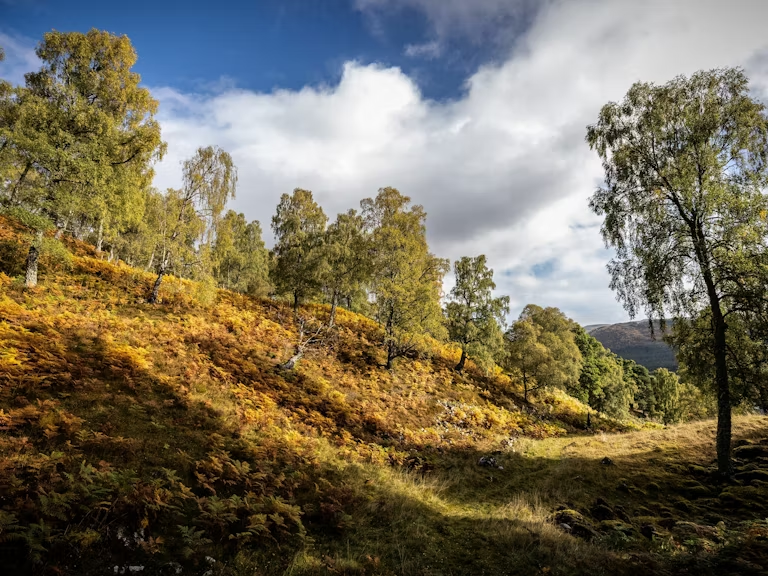
Rewilding 101
Start here to learn all about rewilding, what it looks like and what it can do.
Why rewild
Our vision
We have big ambitions. Find out what we’ve set out to achieve through rewilding.
What we do
Rewild your inbox
Wise up with the latest rewilding news, tips and events in our newsletter.
Sign up now
